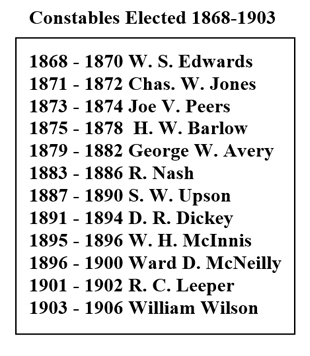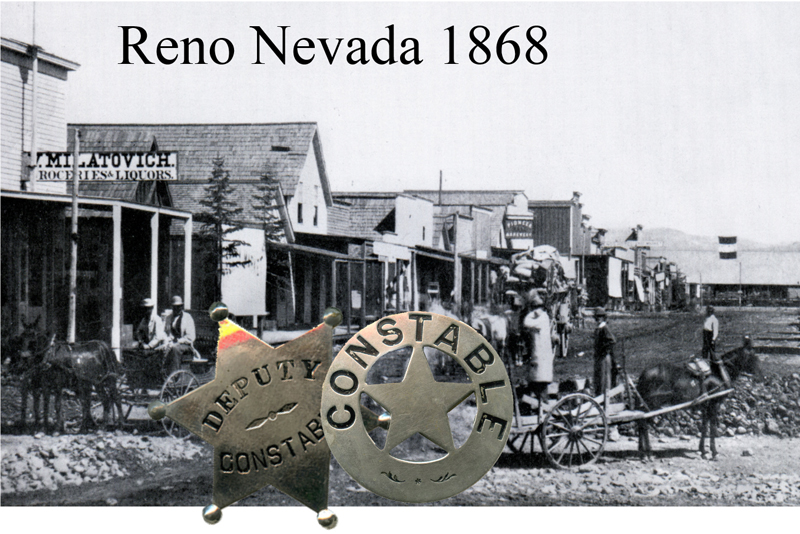
The Reno Constables
Elected constables have been a part of Reno’s history from the beginning in 1868. In fact, when Reno was first created the county seat, courthouse and sheriff's office were all in Washoe City. A constable's office was located in Reno.
During the history of policing Reno, there were occasional conflicts involving the town police, the constable and even the sheriff. Many of the constables appear to move back and forth from one local agency to another. Several constables eventually becoming chief of police or sheriff.
During the early stages of the city council-controlled Reno Police Department, there appeared to be considerable indifference to cooperation between law enforcement agencies. The political wrangling including spats between the chief of police, the sheriff and even the constable
Eventually, the role of the Reno Police Department as the agency policing the City of Reno began to solidified and the law enforcement activities of constable began to wane.
*** LINKS TO ADDITIONAL READING ***
The Compiled Laws of Nevada from 1861 to 1900

Reno Nevada as it appeared in 1868. Law enforcement was provided by elected constables.
RENO NEVADA - THE BEGINNING
When the first adventurers passed through the Truckee Meadows in the 1840s, Washoe and Paiute peoples inhabited the land along the Truckee River. In the late 1840s and 1850s, thousands of travelers on their way to the California gold fields would linger a few days in the Truckee Meadows to feed their animals on the native grasses before crossing the Sierra Nevada. The meadows, fed by the river, offered an oasis, but to travelers, the river was also an obstacle.
In 1857, Charles Gates and John Stone attempted to build a bridge across the river, but spring floods, fed by snowmelt in the mountains, washed it away. In 1860, Charles Fuller built a bridge and a log shelter for travelers upstream from Stone and Gates, and the place became known as Fuller's Crossing. Around the same time, a gold discovery in the hills twenty miles south changed the direction of the gold rush of ten years earlier to what became known as the "Rush to Washoe." Movement in and around the region increased, suggesting the potential for increased demand on the Truckee River crossing.
In 1861, Myron C. Lake purchased Fuller's toll bridge. Lake continued to operate the hotel, which he renamed the Lake House, and developed other businesses to enhance his operation. With profits from his enterprise, Lake purchased additional land surrounding his bridge. Until the arrival of the railroad, the place was called Lake's Crossing.
The Central Pacific Railroad, which began construction in Sacramento in January 1863, reached Reno in May 1868. Its route through the Truckee Meadows followed the river. The location of the depot and a townsite in the Meadows was particularly important, as it was to be the last major stop before westward trains made their way over the steep and rugged Sierra Nevada. Myron Lake sold the railroad 160 acres for a depot and town—and Reno was born, establishing the theme of transportation that would dominate its development for many years.
Lots in the town site went up for auction on May 9, 1868. By mid-July, trains carrying everything from livestock to construction materials were running Monday through Saturday between Sacramento and Wadsworth. The people of Reno almost immediately set out to move the county seat from Washoe City to Reno.
Following a struggle among railroad officials, local businessmen, and Myron Lake, Reno's courthouse was built on a parcel of Lake's land south of the river.

SHARE THIS PAGE!